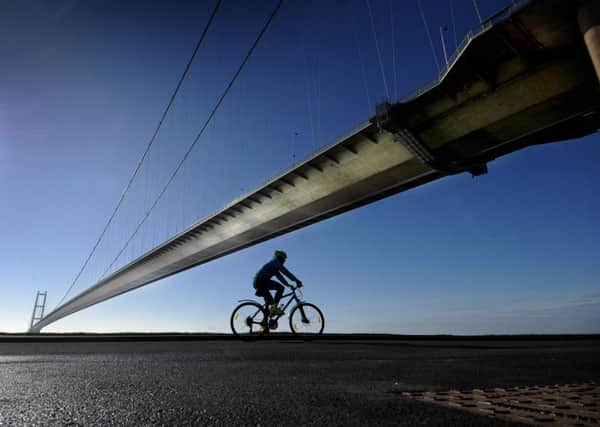Picture Post: Feat of engineering that still spans the decades


The 7,280ft single-span suspension bridge, which can be seen for miles around, was the longest of its type in the world when it was completed and while it has since been superseded it is no less a feat of engineering.
Plans for the bridge were originally drawn up in the 1930s.They were revised in the 1950s, but it was not until two decades later that the money was finally secured and work began.
Advertisement
Hide AdAdvertisement
Hide AdThe Queen declared the bridge open on June 24, 1981 and overnight the gridlock which had been a familiar sight on surrounding roads eased and the economy of the Humber region was transformed.
However, it has not been without controversy. The tolls charged to cross the bridge have divided opinion and over the years there have been various campaigns calling for their abolition.
None have so far been successful, but earlier this year Diana Johnson, MP for North Hull, added her voice to the debate, saying the city, which is still waiting for the upgrade of the A63 and rail electrification, did not have “top 10” transport links.
Ms Johnson who asked for a statement from Northern Powerhouse Minister James Wharton on improving the city’s transport links in the House of Commons today, said: “In light of Hull being put in the top 10 cities to visit and City of Culture 2017 another way of encouraging people to visit the city would be to scrap tolls, at least for 2017, if not permanently.”
Advertisement
Hide AdAdvertisement
Hide AdThe Humber LEP is looking at doing a study on scrapping tolls in light of the dramatic increases in traffic over the bridge since the cost of crossing was halved. In the three years since tolls were halved traffic has risen 30 per cent and is set to continue to rise by five per cent a year.
Once the most expensive toll crossing in the United Kingdom, in April 2012 the toll was reduced to £1.50 each way, after the Government deferred £150m from the bridge’s debt, which should now be paid off by 2030.
Technical data: Nikon D3, 12-24mm lens,exposure 500th sec at f5.6, iso 200.